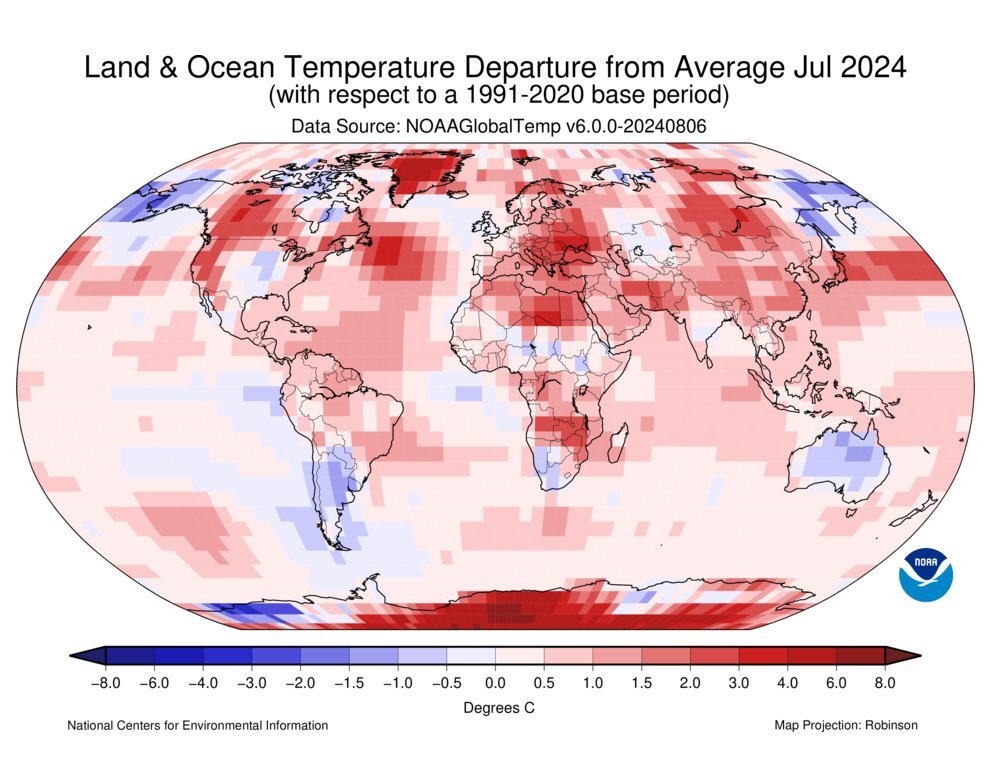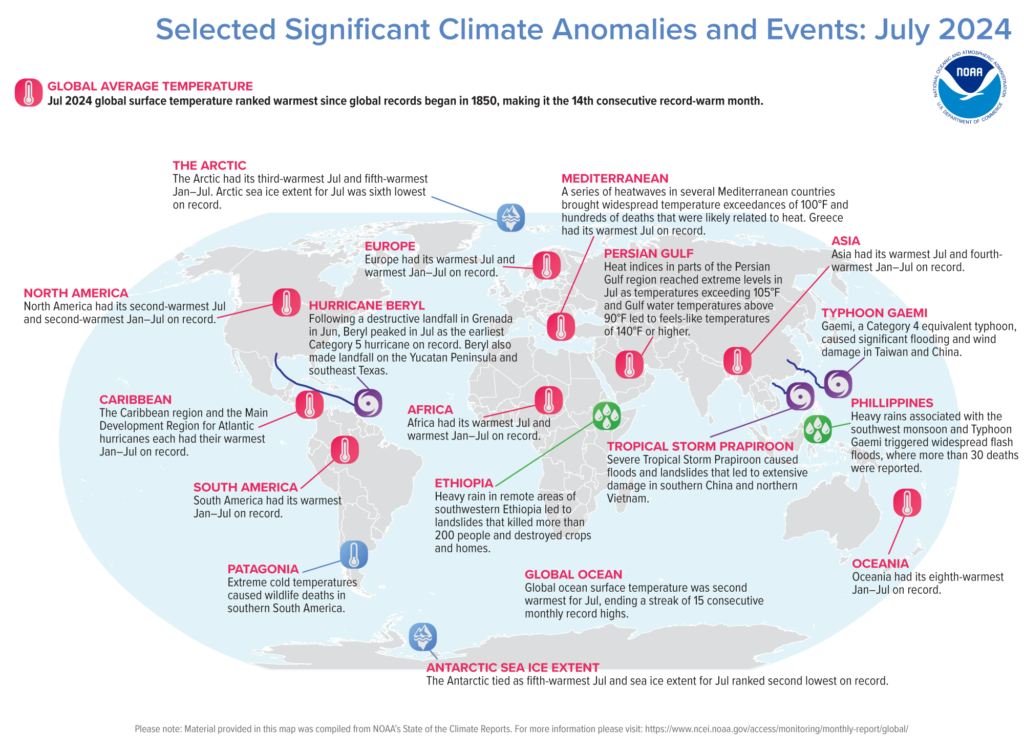Last month was the warmest July in Earth’s history, extending the series of record high monthly global temperatures to 14 consecutive months. This is stated in a report published on the website of the US National Oceanic and Atmospheric Administration (NOAA).

According to NOAA, the average surface temperature in July was 1.21 °C above the 20th century average (15.8 °C), making it the warmest July in 175 years of observations. July 2024 was also the 14th consecutive month with record high temperatures for the planet.
Last month’s temperatures were above average over most of the Earth’s surface except for Alaska, southern South America, Siberia, Australia and western Antarctica. Africa, Asia and Europe recorded the warmest July in the history of observations, while North America had the second warmest July of all time. As for sea surface temperatures in July, it was the second warmest July on record, ending a streak of 15 consecutive record months.
NOAA also reported other remarkable climate events. Global sea ice coverage was below average. The second smallest sea ice coverage in all 46 years of observations was recorded in July — 21,989 km2, which is 2.82 million km2 below the average for 1991 – 2020. Arctic sea ice coverage was below average by 854 thousand km2 and Antarctic sea ice coverage was below average by 1.968 million km2.

July tropical activity was below average. Seven named storms developed over the globe in July, and this is below the average from 1991 to 2020. There were two storms in the Atlantic basin, including Beryl, the earliest Category 5 hurricane in history; three in the eastern Pacific, and two in the western Pacific.
We’ve previously told you about how global warming slowed down the Earth’s rotation on its axis.
According to NOAA


